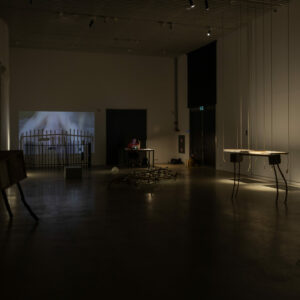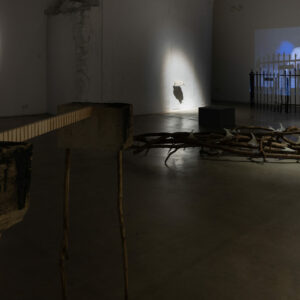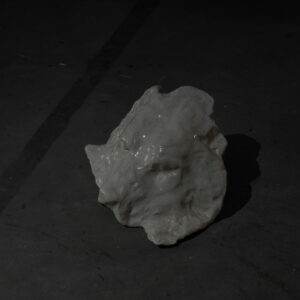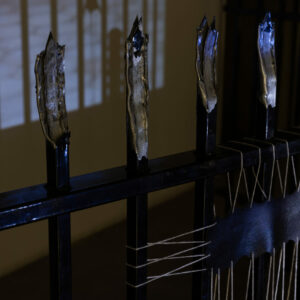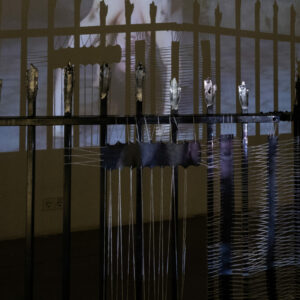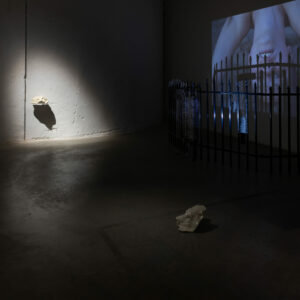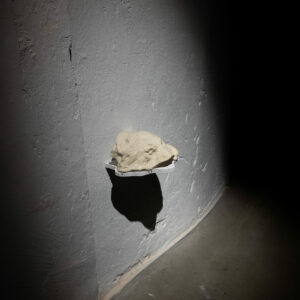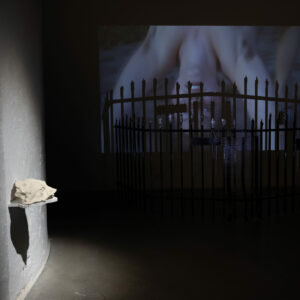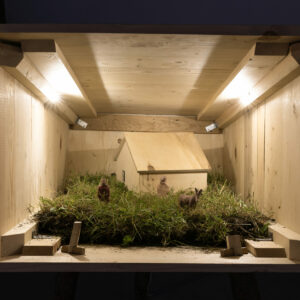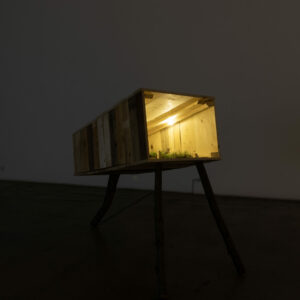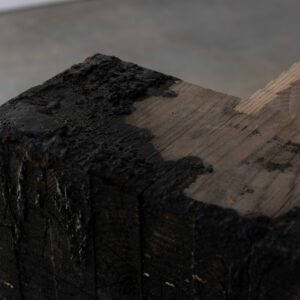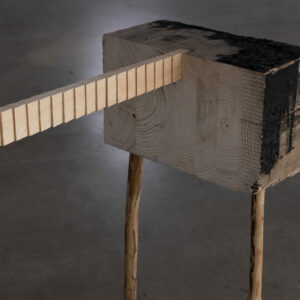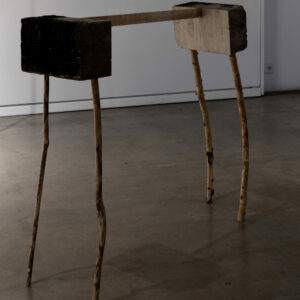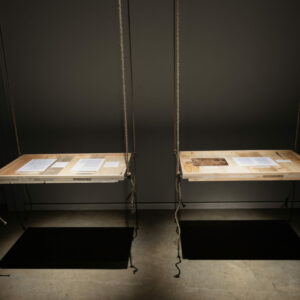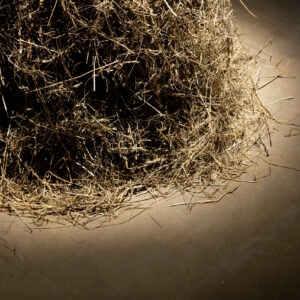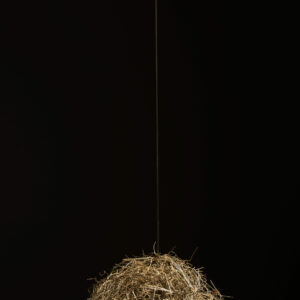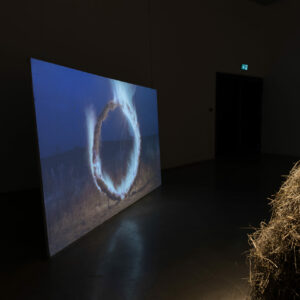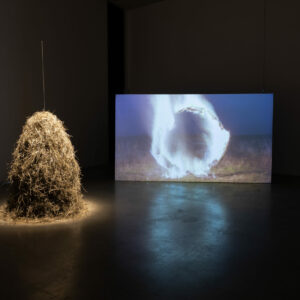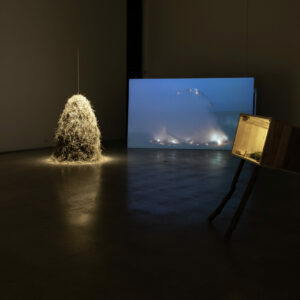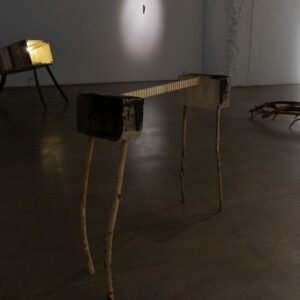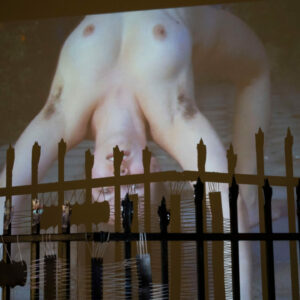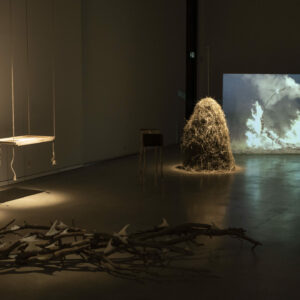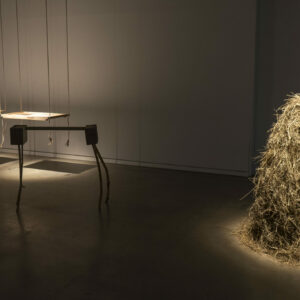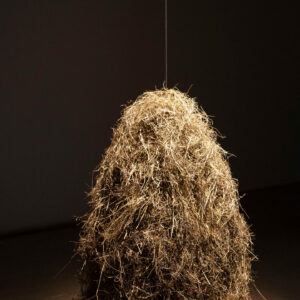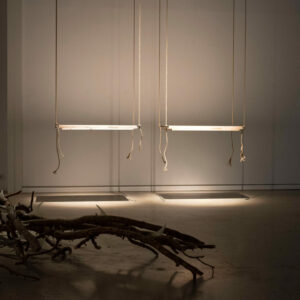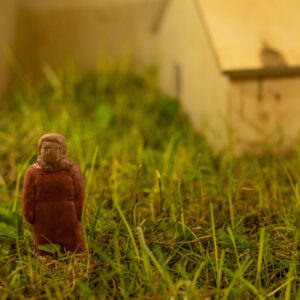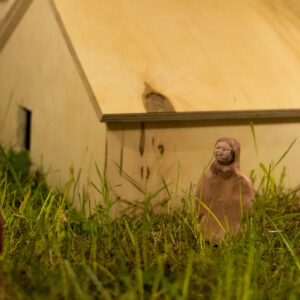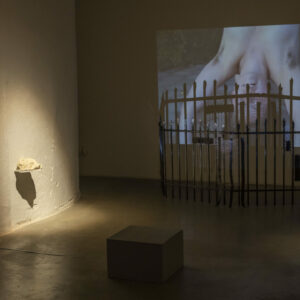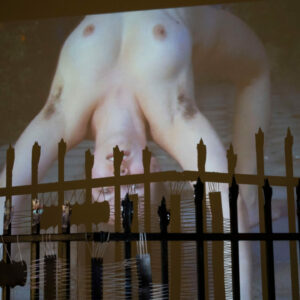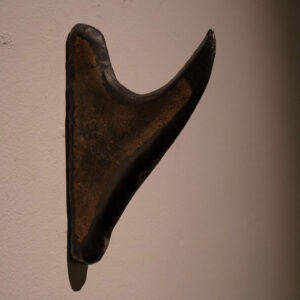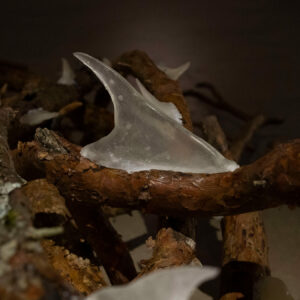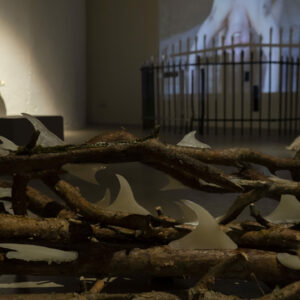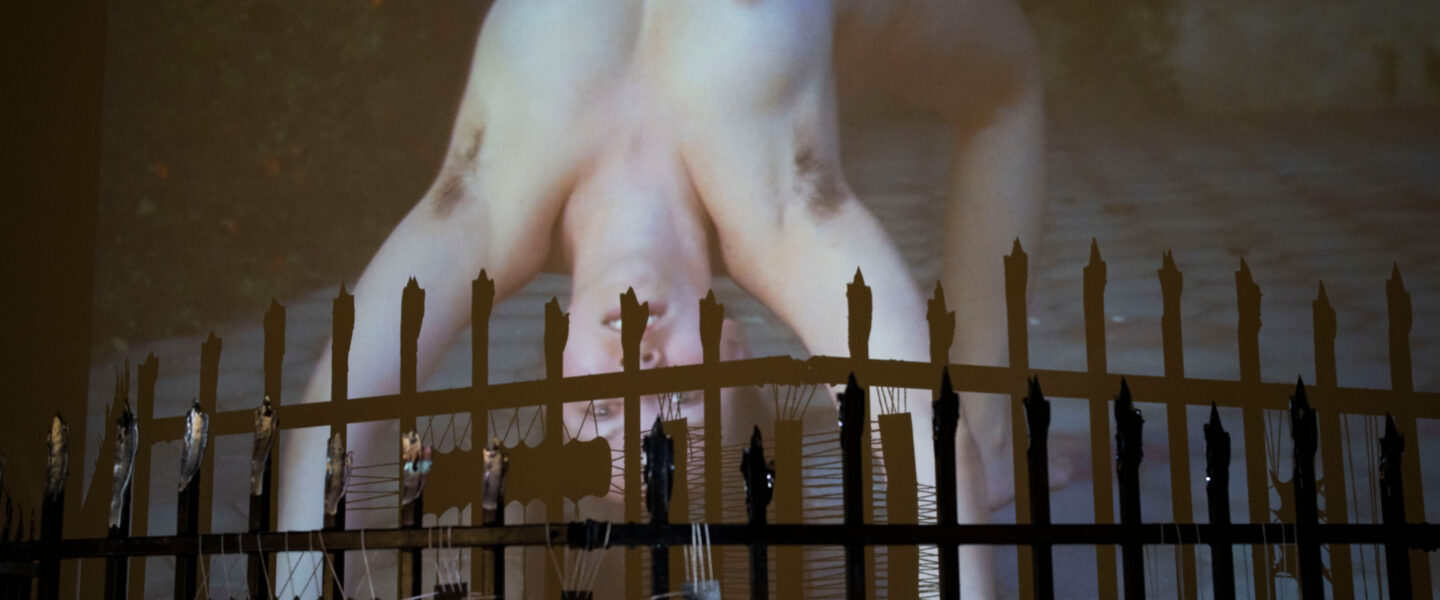
14.07.2023
Start Time:
18:00
End Date:
10.08.2023
Photos by Paul Klooren and Elo Vahtrik
Persuading Hard Matter
Sophia Hallmann, Loora Kaubi, Mattias Veller, Oliver Wellmann
15.07–10.08.2023
Opening 14.07 at 6 pm
Join us for the exhibition Persuading Hard Matter opening on 14.07, 6 pm at EKA Gallery! The entrance to the exhibition is via Kotzebue street.
The metaphor of “softening stones” (kive pehmeks rääkida) conveys the idea that a person is able to affect or manipulate even the most resistant and solid objects, much like speaking can lead to an emotional breakthrough or change.
In this exhibition, the artists found common ground in dealing with what is larger than themselves: be it phenomena that go far back in time or those that are situated in the minds of groups. Stones can be viewed as the embodiments of still-enduring old ideas. Some of them have since eroded into the dust of prehistory, others still stand like monuments. As time has passed, many have become burdens, but they are often too heavy to cast off of our collective shoulders. Systems of belief have learned to resist change by cultivating delusions in the minds of their believers.
In Sophia Hallmann’s work “Hyperstimuli”, sugar has been transformed into glass-like thorns. Her installation juxtaposes the fragility and sweetness of the material with the prickliness of the thorn shape. These contrasting aspects evoke the concept of sweet pain. Appealing also to the senses of taste and touch, the work deals with the complex relationship between pleasure and discomfort. Isomalt sugar has been transformed into a seemingly luxurious glass-like object. Because both the branches and sugar are organic, they will eventually decompose, breaking the illusion of eternal security that luxury creates.
Persuasion is a tool for shaping reality. It can be used to create an illusion of safety, which is a delusive contentment. Loora Kaubi’s work addresses the domination of a patriarchal system through violent architecture. In her installation, Kaubi performs a contorted body walking in bridge position towards the viewer, suggesting the mental damage done by conforming to oppression. In “Mind and hand follow an evil path” objects combined with choreography are used to reflect on feelings of hostility and discomfort. Is it the outside world that one must be protected from or should we protect the outside from the world within? The fences come across as material representations of the fear that is omnipresent for anyone not standing safely at the top of the power hierarchy.
On the topic of domination, the practice of storytelling can be seen as a tool that liberates from the burden of having no voice. It encourages us to claim the right to be heard and express things as we desire them to be, under the guise of objectivity. Oliver Wellmann’s work circulates around mythic traditions, exploring their controversiality. The work „Raunen (Fires)“ stems from the ongoing performance cycle “Raunen” (ger. ‘whispering the truth’), in which dark rural worlds blend with elements of the auto-fictional. Hay is a material that often self-ignites, eventually causing major fires.
Another grand story is the mythic narrative of the nation, which looms over the individual like a massive rock. Mattias Veller expresses frustration at having to accept it and all of its inconsistencies. Individually, he is unable to coax the rigid national mythos to soften, so he decides to turn the tables. In “The Donkey in Estonia” he demonstrates the absurdity of the ways in which collective identity is shaped. He is interested in how belief works and how to fool the gullible.
The works in “Persuading Hard Matter” can be seen as the artists’ interpretations of the tensions between themselves and overwhelming forces. Be it acceptance, toleration, protest or domination, some kind of persuasion always occurs. Its effectiveness can never be known in advance.
Sophia Hallmann (b. 1995) lives and works in Berlin, where she studies sculpture and installation at the Berlin University of Arts. In her work she deals with different moulding techniques and casting processes, where the relationship between the depicted object and the material used plays an important role. Often her works evoke a sense of tension with the human body. During her Erasmus exchange at the Estonian Academy of Arts, Sophia Hallmann participated in the Young Sculptor Award Exhibition 2023 at the ARS Project Space and won the 3rd prize. In addition, she has participated in several group exhibitions in Berlin and received a scholarship from the Tutsek Foundation.
Oliver Wellmann (b. 1991) is an artist living and working in Berlin who is currently studying at the University of Arts Berlin. His artistic practice interlocks internal sources with external ones or those that have frequently been abandoned. The imagery in his work distinctly revolves around rural areas, folkloric traditions and spiritual empowerment such as witchcraft. Oliver’s artistic exploration of witchcraft in a contemporary context raises questions in a society that thirsts for meaning and spirituality, but where both are simultaneously classified as vanishing phenomena. In 2023 he exhibited extracts of the performance cycle „Raunen“ in Iceland and will continue to do so in Estonia, followed by Denmark in the fall.
Loora Kaubi (b. 1998) is an artist working in Tallinn. She holds a BA degree from the Estonian Academy of Arts’ Fine Arts department and did part of her studies at the Academy of Fine Arts Vienna. She has also attended Casa Lü residency in Mexico City. Kaubi’s practice revolves around the (female) body and the societal relations and power structures that are involved with it. Wandering between the real and the imaginary, in her work she approaches life as a spectacle and focuses on creating a scene through which to perform intense emotions. Kaubi has been awarded the Artist of the Week Award of the Estonian Young Contemporary Art Union and has participated in exhibitions and performances in Tallinn, Narva, Haapsalu, Valga, Põlva, Vienna and Mexico City.
The recurring topics in Mattias Veller’s (b. 1998) artistic practices are physical labour and the relationship between human and material. Conceptually, he is rather minimalistic and technically he is precise, often applying time-consuming manual approaches. Veller is currently most interested in collective consciousness and history. He has been awarded the Artist of the Week Award of the Estonian Young Contemporary Art Union. His works have been shown in group projects in the ARS Project Space and Uus Rada Gallery (2023), EKA Gallery (2022) and in a duo exhibition in Infinite Life Gallery (2021).
Supported by: Cultural Endowment of Estonia, Student Council of UdK Berlin, Embassy of the Federal Republic of Germany Tallinn
The artists would like to thank: Ulvar Kaubi, Saara Liis Jõerand, Elss Raidmets, Patrick Zavadskis, Mirje Veller, Riina Veller, Karl Linnasmägi (OÜ NovaElement), Valge Kuup OÜ

